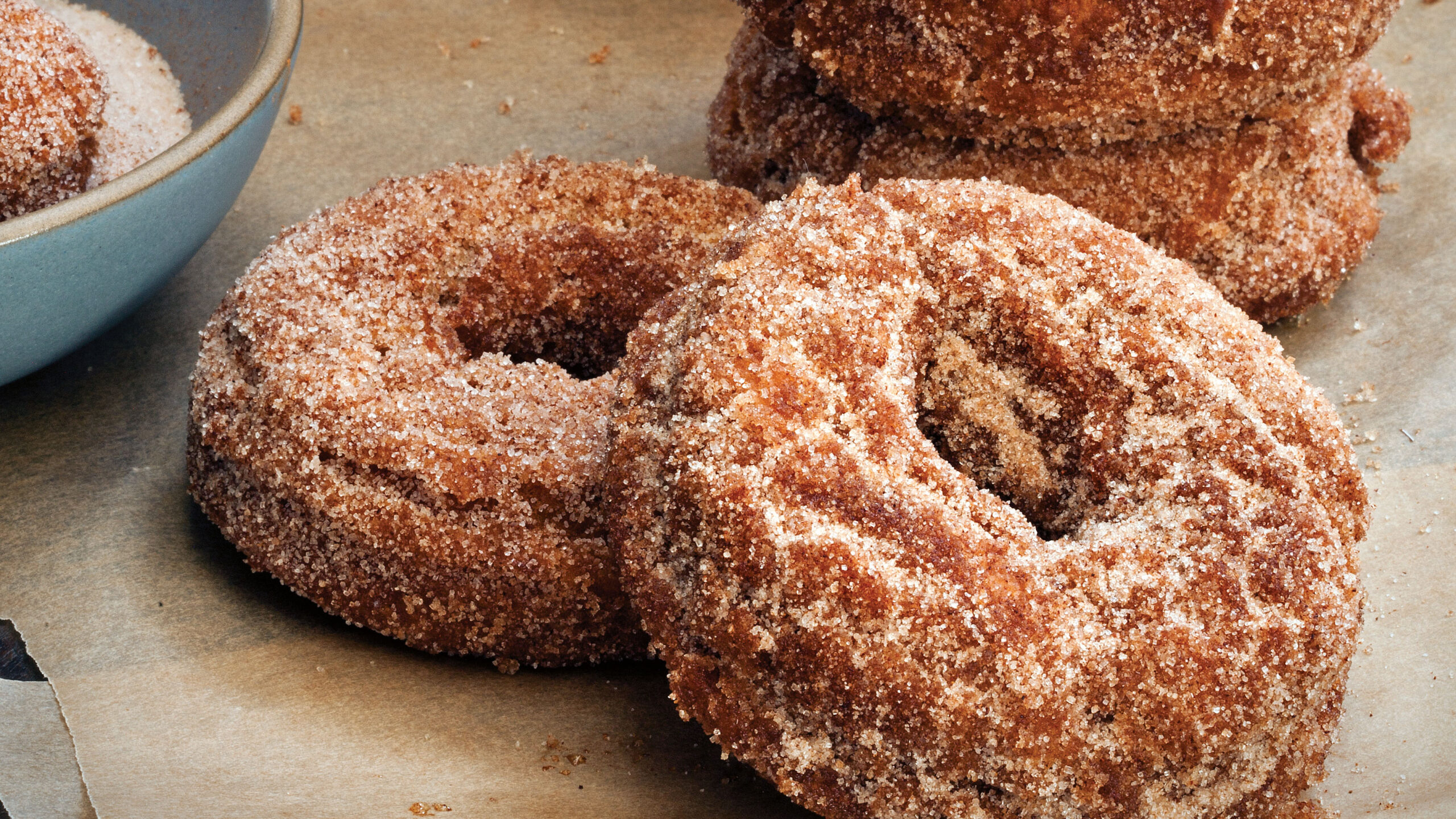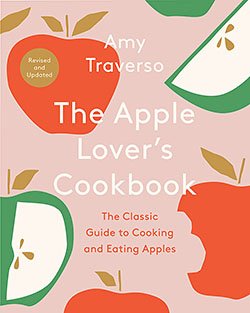
It’s a cider-maker’s tradition to use some of the freshly pressed juice to make lightly tangy, apple-scented donuts like these. The cider adds more than flavor, though; its acidity makes donuts more tender.
I have two favorite spots for buying these treats: Atkins Farm in Amherst, Massachusetts, and Cold Hollow Cider Mill in Waterbury, Vermont. And when I can’t be there, I make my own.
Notes: Boiled apple cider gives these donuts a very rich, slightly tangy flavor. You can buy boiled cider in some gourmet and Whole Foods stores; from Wood’s Cider Mill in Springfield, Vermont; or from the King Arthur Flour catalog. Alternatively, you can boil your own cider by simmering 1 1/2 cups of fresh apple cider down to 1/3 cup in about 25 minutes—it just won’t be as concentrated as the commercial product.

Vermont Cider Donuts
Equipment
- Hand-held or stand mixer
- 2 large baking sheets
- Parchment paper or wax paper
- 3-inch donut cutter or 2 biscuit cutters (one 3 inches and one 1 inch)
- 4- to 5-quart Dutch oven or other heavy-bottomed pot
- Candy or frying thermometer
Ingredients
- 1 cup (200 g) granulated sugar
- 5 tbsp (70 g) unsalted butter, at room temperature
- 2 large eggs, at room temperature
- 3 1/2 to 4 cups (490 to 560 g) all-purpose flour, plus additional for work surface
- 1 1/4 tsp table salt
- 2 tsp baking powder
- 1 tsp baking soda
- 1 1/2 tsp ground cinnamon
- 1/2 tsp freshly grated nutmeg
- 1/2 cup (120 ml) lowfat buttermilk
- 1/3 cup (80 ml) boiled apple cider
- 1 tbsp vanilla extract
- Canola or safflower oil for frying
- Cinnamon-sugar (1 1/2 cups sugar mixed with 3 tablespoons ground cinnamon) or confectioners’ sugar for sprinkling
Instructions
- In a large bowl using a hand-held or stand mixer fitted with the whisk attachment, beat together the sugar and butter until the mixture is pale and fluffy, 4 to 6 minutes. Add the eggs, one at a time, beating for a minute after each. In a medium bowl, whisk together 3 1/2 cups flour, salt, baking powder, baking soda, cinnamon, and nutmeg; set aside.
- Pour the buttermilk, boiled cider, and vanilla into the sugar-butter-egg mixture. Mix well, and don’t worry if the mixture looks a bit curdled; it’ll smooth itself out. Add the flour mixture and gently mix just until fully moistened. If the mixture seems too wet to press out and cut, add the remaining 1/2 cup flour. The mixture may appear a bit lumpy, but the most important thing is not to overmix.
- Line the baking sheets with wax paper or parchment paper and dust generously with flour. Turn the dough out onto one baking sheet and gently pat into a 3/4-inch-thickness. Sprinkle dough with additional flour, cover with plastic wrap and put in the freezer for 10 minutes to firm up. Remove the dough from the freezer and use a lightly floured 3-inch donut cutter (or two concentric biscuit cutters) to cut out about 18 donuts with holes. You can gather the scraps and re-roll as needed, but you may need to chill the dough more to firm it up. Put the cut donuts on the other baking sheet as you go, then transfer to the freezer for 5 minutes to firm up again.
- Preheat the oven to 200ºF and set a rack in the middle position. Set a plate lined with a few layers of paper towels nearby. In a Dutch oven or large pot, heat 3 inches of oil to 370ºF (test with a thermometer). Drop 3 donuts into the oil, being careful not to crowd the pan. Cook until browned on one side, about 1 minute, then flip over and cook until browned on that side, about one minute more. Transfer the donuts to the paper-towel-lined plate and keep warm in the oven as you cook the rest. Repeat with the remaining dough (if you find it getting too soft as you work your way through the batches, pop it in the freezer again for 10 minutes). When the donuts are cool enough to handle, but still warm, sprinkle all over with the cinnamon-sugar or confectioners’ sugar. Serve immediately.
Notes
 Reprinted with permission from The Apple Lover's Cookbook: The Classic Guide to Cooking and Eating Apples by Amy Traverso. Copyright © 2020, 2011, by Amy Traverso. Photos Copyright © 2011 by Squire Fox. Published by W.W. Norton & Company, Inc.
Reprinted with permission from The Apple Lover's Cookbook: The Classic Guide to Cooking and Eating Apples by Amy Traverso. Copyright © 2020, 2011, by Amy Traverso. Photos Copyright © 2011 by Squire Fox. Published by W.W. Norton & Company, Inc.
